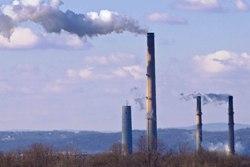EPA Highlights for the Week of April 18, 2016

- Celebrate Earth Day by Reducing Food Waste
- EPA Forward: It’s Time To Reach The Next Level Of Public Health Protection
- EPA Releases 21st Annual Greenhouse Gas Inventory
- Applications for Environmental Educator Award due May 16
Celebrate Earth Day by Reducing Food Waste
 Shopping your fridge and pantry first saves you money and reduces food waste.Thirty-seven million tons of food waste was generated by Americans in 2013; 95% of that was thrown away in incinerators and landfills. Wasted food in landfills becomes a significant source of methane, a powerful greenhouse gas, as it rots. By donating wholesome, nutritious food and composting inedible food, we can help feed our communities and the earth while reducing greenhouse gas emissions.
Shopping your fridge and pantry first saves you money and reduces food waste.Thirty-seven million tons of food waste was generated by Americans in 2013; 95% of that was thrown away in incinerators and landfills. Wasted food in landfills becomes a significant source of methane, a powerful greenhouse gas, as it rots. By donating wholesome, nutritious food and composting inedible food, we can help feed our communities and the earth while reducing greenhouse gas emissions.
Earth Day is April 22. Combat food waste by using smart household food management practices. EPA's Food: Too Good to Waste Toolkit offers simple tips about how to reduce your wasted food through awareness, smart shopping, storage, and saving.
Read a blog post about the toolkit and how to make wasted food a thing of the past.
Find more tips on reducing wasted food.
EPA Forward: It’s Time To Reach The Next Level Of Public Health Protection
 Pollution isn't just an environmental problem - it makes people sick.For over four and half decades, EPA has cut air pollution by 70 percent, cleaned up thousands of contaminated sites, and protected thousands of waterways — all while our nation’s economy has tripled.
Pollution isn't just an environmental problem - it makes people sick.For over four and half decades, EPA has cut air pollution by 70 percent, cleaned up thousands of contaminated sites, and protected thousands of waterways — all while our nation’s economy has tripled.
But our work is far from done. We now have — or are working towards — many of the tools, technologies, and capabilities needed to reach for the next level of environmental protection and tackle some of the serious and complex challenges that remain. At its heart, EPA is a public health agency.
Read a blog postExit by EPA Administrator Gina McCarthy on the path forward for EPA to do more to protect public health.
EPA Releases 21st Annual Greenhouse Gas Inventory Report
 Greenhouse gases are the primary driver of climate change.EPA recently published the annual U.S. Greenhouse Gas (GHG) Emissions and Sinks, which presents a national-level overview of annual greenhouse gas emissions since 1990. The inventory shows a 9% drop in emissions since 2005, and a 1% increase in greenhouse gas emissions in 2014 from 2013 levels. By sector, power plants were the largest source of emissions, accounting for 30% of total U.S. greenhouse gas pollution. The transportation sector was the second largest source, at 26 percent.
Greenhouse gases are the primary driver of climate change.EPA recently published the annual U.S. Greenhouse Gas (GHG) Emissions and Sinks, which presents a national-level overview of annual greenhouse gas emissions since 1990. The inventory shows a 9% drop in emissions since 2005, and a 1% increase in greenhouse gas emissions in 2014 from 2013 levels. By sector, power plants were the largest source of emissions, accounting for 30% of total U.S. greenhouse gas pollution. The transportation sector was the second largest source, at 26 percent.
We are already seeing impacts of climate change in the United States, including warming temperatures, changes in precipitation, increases in the frequency or intensity of extreme weather events, and rising sea levels. These impacts threaten Americans’ health by affecting food safety as well as water and air quality.
Applications for Environmental Educator Award due May 16
 Teacher awardees connect students with the world around them.EPA is accepting applications for the Presidential Innovation Award for Environmental Educators (PIAEE).The award recognizes outstanding K-12 teachers who employ innovative approaches to environmental education and use the environment as a context for learning.
Teacher awardees connect students with the world around them.EPA is accepting applications for the Presidential Innovation Award for Environmental Educators (PIAEE).The award recognizes outstanding K-12 teachers who employ innovative approaches to environmental education and use the environment as a context for learning.
Award winners receive up to $2,500 to continue their professional development in environmental education. Additionally, the teacher's local education agency will receive up to $2,500 to fund environmental educational activities and programs. One of last year's winners encouraged students in her class to spend time cultivating a butterfly garden as a means to learn about monarch butterfly migration, the loss of the monarchs’ native habitat, and other anthropogenic impacts.
